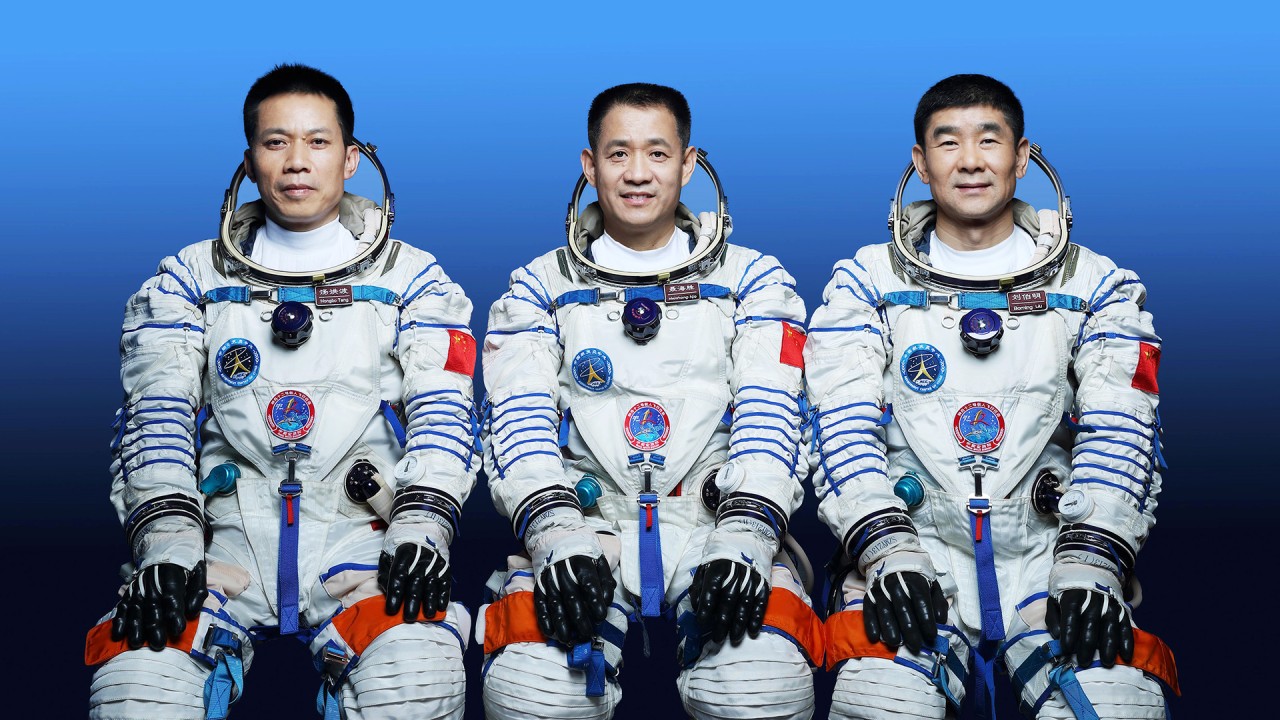
World’s space powers should explore ways to work with China: former ISS commander
- Canadian astronaut Chris Hadfield says the Chinese programme has displayed ‘tremendous’ ability
- Joint efforts took place even in the depths of the Cold War, he says
The world’s space powers should find ways to overcome “political inertia” and work with China to explore worlds beyond Earth, according to a Canadian astronaut who worked on both the Russian and American-led space programmes.
He said that while “the inertia of politics including protection of proprietary technology will remain as concerns”, there was a lot of room for cooperation with other countries.
“Countries and companies have spent a tremendous amount of time and taxpayers’ money or company funds developing something, then obviously, they want to benefit from their investment. If you have the military’s involvement, you have to keep quiet working on things that can’t be public knowledge for security reasons,” he said.

02:27
China sends astronauts on space mission to build Tiangong Space Station
Hadfield said there were also moments of cooperation in the depths of the Cold War between the then Soviet Union and the United States, despite the “huge tension and animosity” that inspired his space thriller The Apollo Murders.
“Even when the Cold War was ongoing between the [then] Soviet Union and the United States, they managed to find a way to dock Apollo and Soyuz together. I think there will definitely be opportunities to work with China,” Hadfield said, referring to the docking of a US Apollo module with a Soviet Soyuz capsule in 1975.
He said a more recent example of cooperation was the Lunar Reconnaissance Orbiter, a Nasa robotic spacecraft mapping the moon using a Russian-made neutron detector.
“One of the world’s leading neutron sensors trying to find water on the moon ... is Russian-made, [working] inside an American spaceship mapping the moon. These are exemplary collaboration achievements,” he said.
“Cooperating on an international level is for sure a natural and the right thing to do [in space exploration].”
He said the ISS was an example of a project that could have failed without joint international efforts.
“When we had the Columbia [space shuttle tragedy] in 2003, the International Space Station was just getting going. We would have had to abandon it [without replying to the Russian space supply ships],” he said referring to the explosion of the shuttle that killed all seven crew members on board.
What is China’s Tianwen-1 Mars mission?
China is already working with various European countries on joint projects through the European Space Agency (ESA).
The ESA gave ground station support to both the Chang’e 5 lunar sample-return mission last year and the ongoing Mars Tianwen 1 mission.
According to the official People’s Daily, at least three European astronauts from Germany, France and Italy are training with the China National Space Administration (CNSA). They are expected to join missions to the Chinese space station from next year.
China’s manned space project office said that besides partnering with the ESA, it had cooperated with the space agencies of Russia, Germany, France, Belgium, Italy, Pakistan, Brazil, Japan, India and the United Nations Office for Outer Space Affairs.
In March, Moscow and Beijing took their cooperation on lunar exploration one step further by signing an agreement to build an international research station on the moon.
Hadfield said he was “quite optimistic” that the Canadian Space Agency would work to “continue and increase cooperation” with China through the ESA, despite Canada’s ties to the US.
“Obviously, at the scientific level, Canada is very involved and very interested in cooperation with China,” he said.

03:08
China joins elite club of countries that have reached Mars
Hadfield started his career as a fighter pilot in the Canadian air force and was involved in various military operations including intercepting a Soviet long-range bomber in the Canadian Arctic in the 1980s.
He went on to become an astronaut, working on Russia’s Mir space station in 1995 and serving as Nasa’s director of operations at Russia’s cosmonaut training centre from 2001-2003.
An important part of his career was learning Russian.
“I studied Russian for 20 years. So that I can be the pilot of a Russian spaceship, and be a good commander for an international crew,” he said.
“Some of the older Russian or former Soviet astronauts don’t speak any English. When we are dealing with Chinese astronauts, most of them don’t speak much English. And so we have to work with an interpreter or translator.
“But, that’s just normal around the world.”
First astronauts enter China’s Tiangong space station after successful docking operation
Hadfield said he relied on an interpreter to speak to Chinese astronauts, including the country’s first astronaut Yang Liwei, during his visit to China in 2014 with the Association of Space Explorers, whose members have all completed at least one space orbit of Earth.
The Canadian is also chairman of the Open Lunar Foundation, a non-profit organisation based in the US that meets every full moon.
Hadfield said that as part of the group he invited Chinese and Russian experts to discuss issues related to “peaceful, cooperative lunar settlement for the benefit of all life”.
“Two full moons ago, we had a Chinese participant from the CNSA joining us, talking about the international laws, regulations and agreements we’re going to follow up on the moon,” he said.
“The issues being discussed include what property rights, land rights is going to be on the moon, whose laws do we live by? Should it be through the committee for Peaceful Uses of Outer Space through the United Nations? How are we going to cooperate with China? The discussion needs Chinese participation as they have landed on the far side of the moon.”

